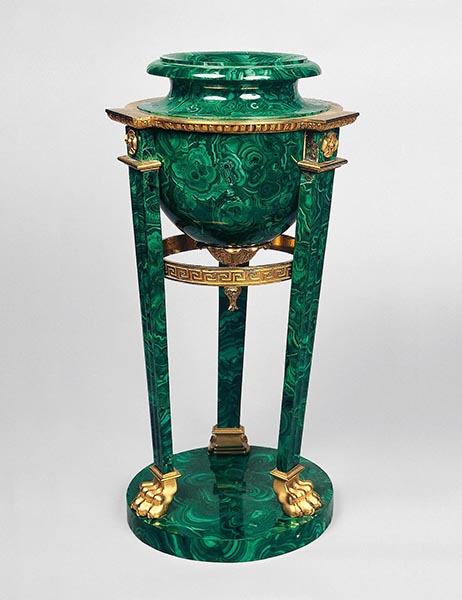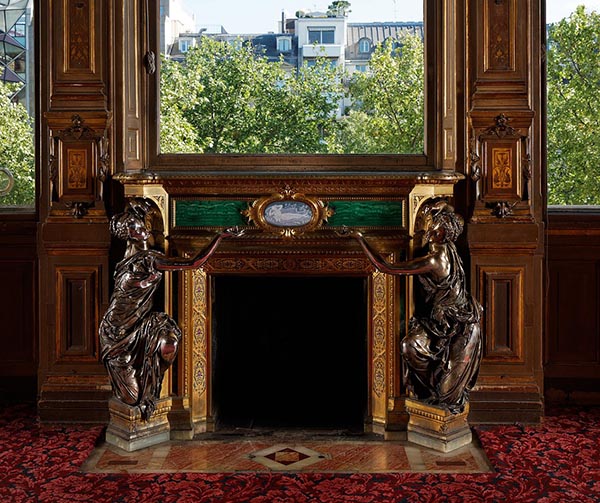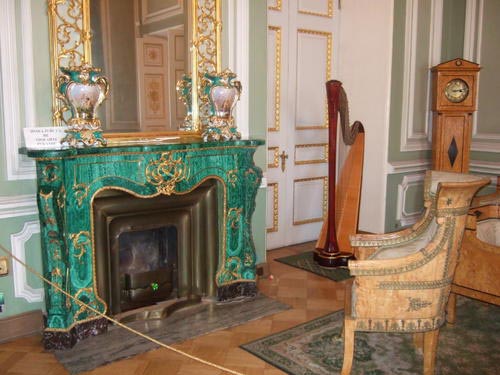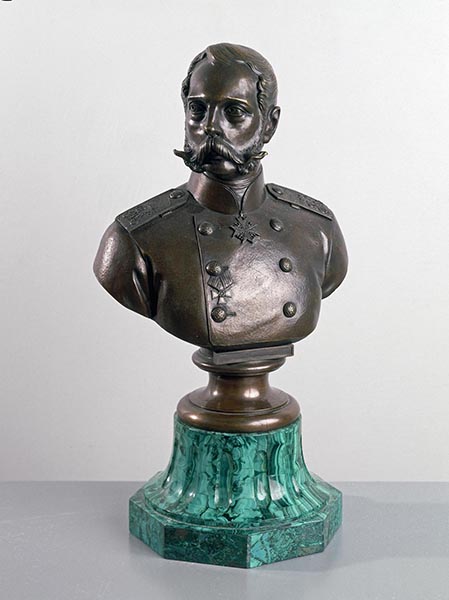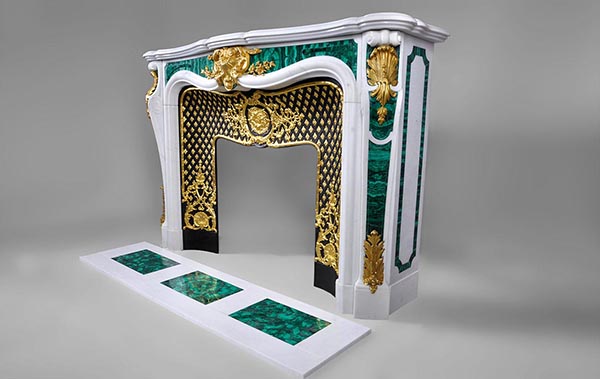Malachite
Download PDFThe malachite, with its intense green due to its strong composition of copper, is a mineral much appreciated in the nineteenth century. Russia enjoys indeed important quarries which are known since the 17th century, including that of Nijni Taguil, discovered in 1835 and exploited by Count Demidoff.
Used in blocks to make small objects, malachite is not appropriate to the realize large works such as those that can be made in marble. This is why "Russian mosaic" was developed in the second half of the 18th century: slivers of malachite are clad to give the illusion of a block, enabling to display this extraordinary color on walls, columns, doors, and other elements of interior decoration. The royal lapidary manufactures of Peterhof and Ekaterinburg developed this art, which soon seduced the aristocracy.
Thus in 1775, the Viceroy of New Spain (Mexico) had the first the idea of a "Malachite Room" for his Castle of Chapultepec. The malachite of Siberia decorates notably an impressive Rococo door.
The new beauty of this refined art creates a craze that will last during all nineteenth century. France discovered this famous technique when, in 1808, Alexander I of Russia gave Napoleon I some gifts in malachite. Candelabra, large vases and a basin are installed in the Salon of the Emperor in Trianon, now known as the "Malachite Room".
The French craftsmen are then working on malachite, and during the Restoration, Pierre-Philippe Thomire produced several pieces, including the large Medici Vase mounted in gilt bronze, commissioned by Prince Demidoff, and now preserved at the Metropolitan Museum in New York.
In Russia, the discovery of the Nijni Taguil quarry in 1835 allows to think bigger for the monuments of Saint-Petersburg. Thus, malachite covers the immense columns of St. Isaac Cathedral, and a new "Malachite Hall" is designed for the magnificent Winter Palace.
Indeed, the architect Alexander Briullov designed in 1839 a reception room for the Empress Alexandra Fyodorovna, wife of Nicholas I, with columns and a fireplace in malachite.
A true Russian treasure, numerous ornaments from paper-press to monumental vases adopt malachite, including a large collection preserved in the Hermitage Museum.
Circa 1860, this is probably what motivated Mme de Païva, of Russian origin, to insert a malachite veneer on the fireplace of her room in her famous Parisian mansion.









